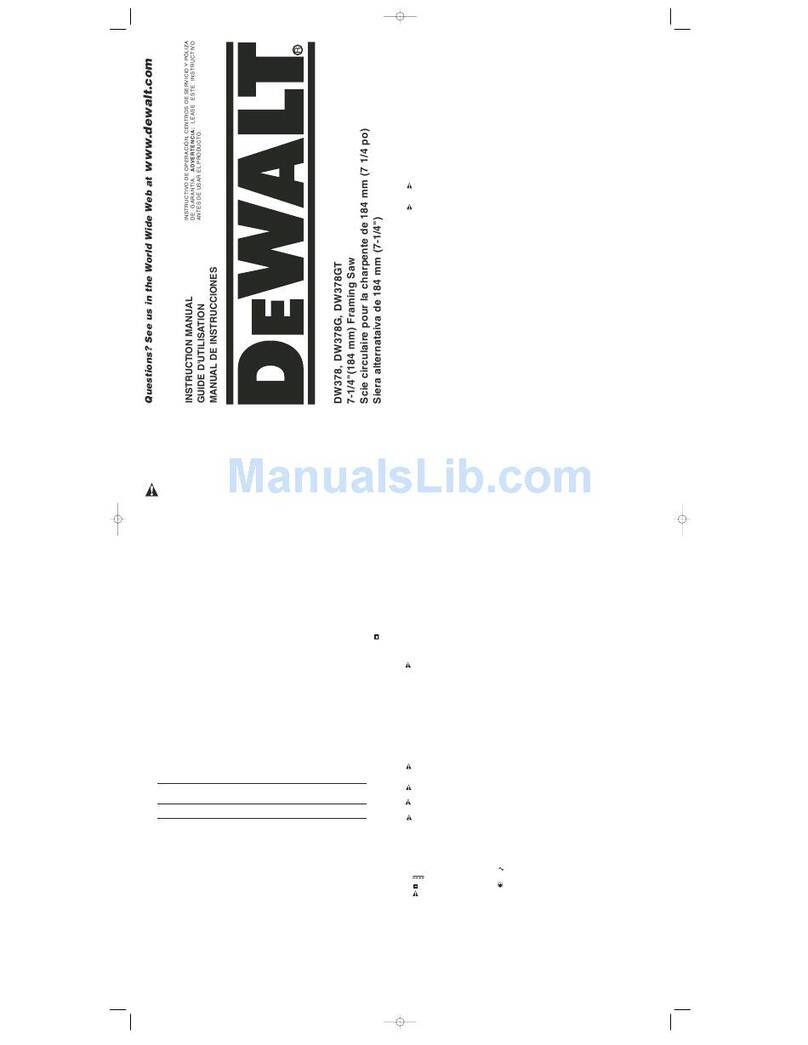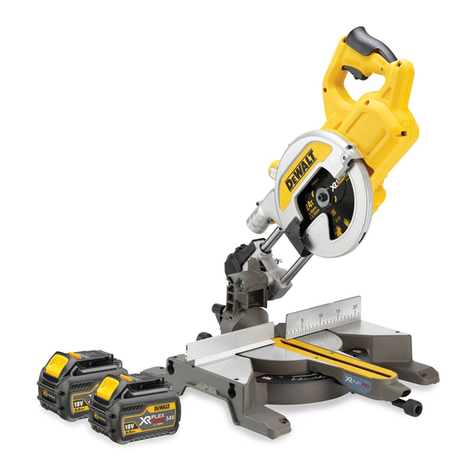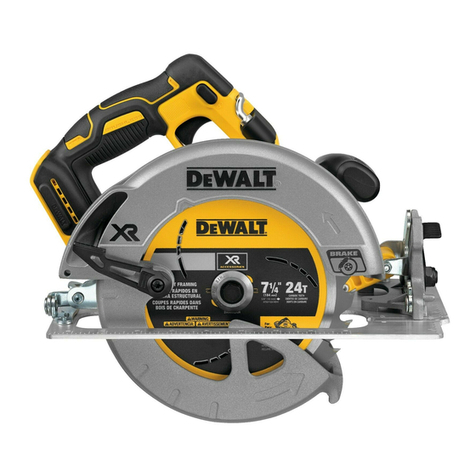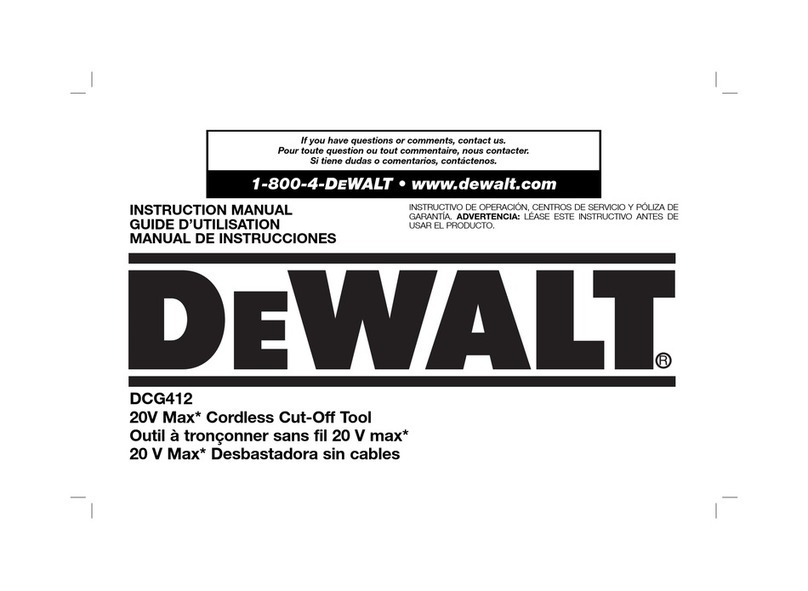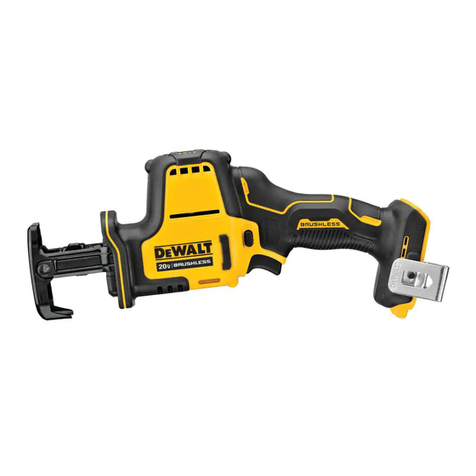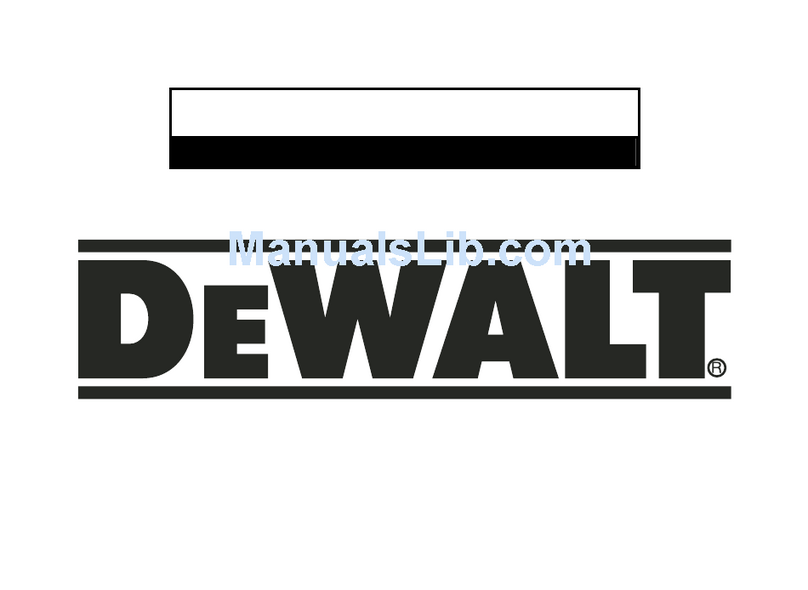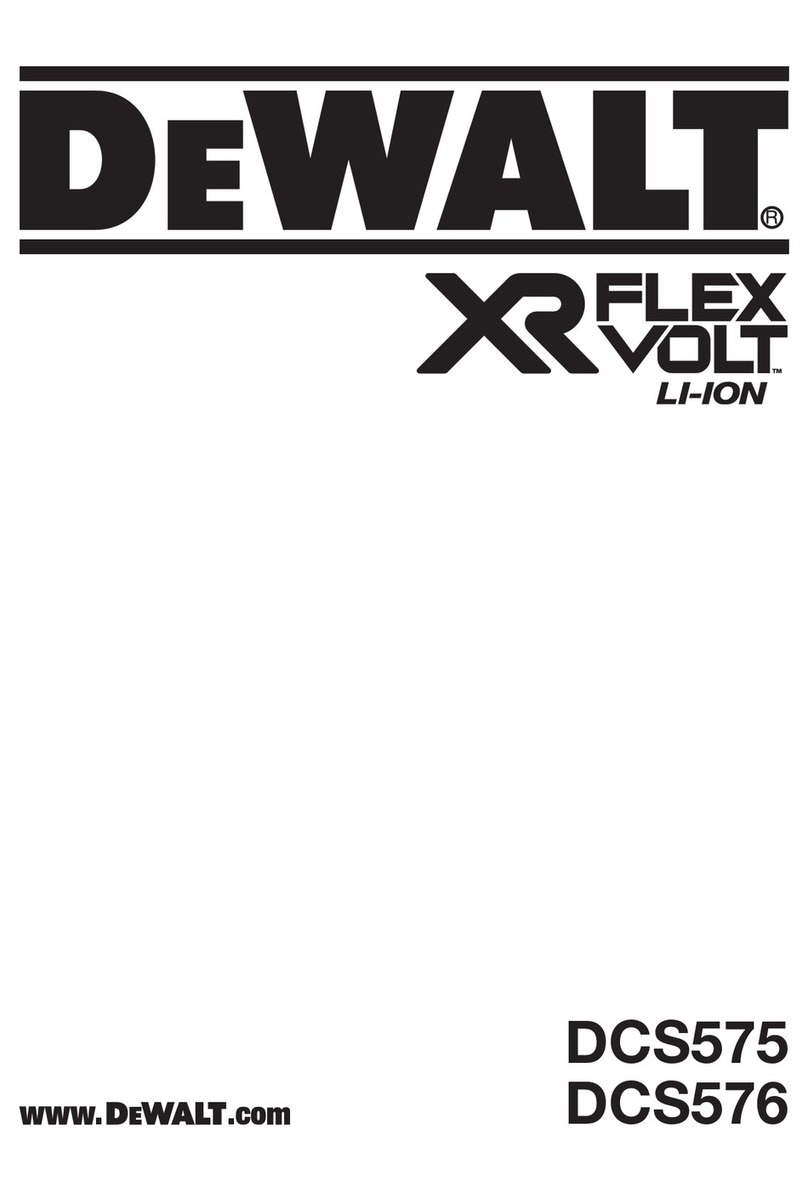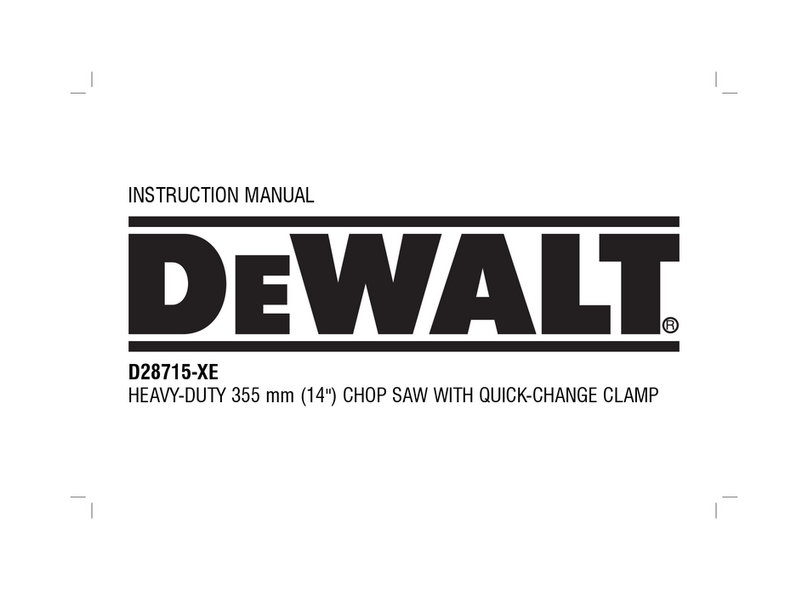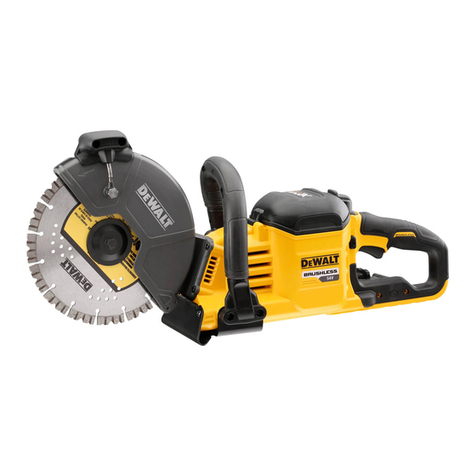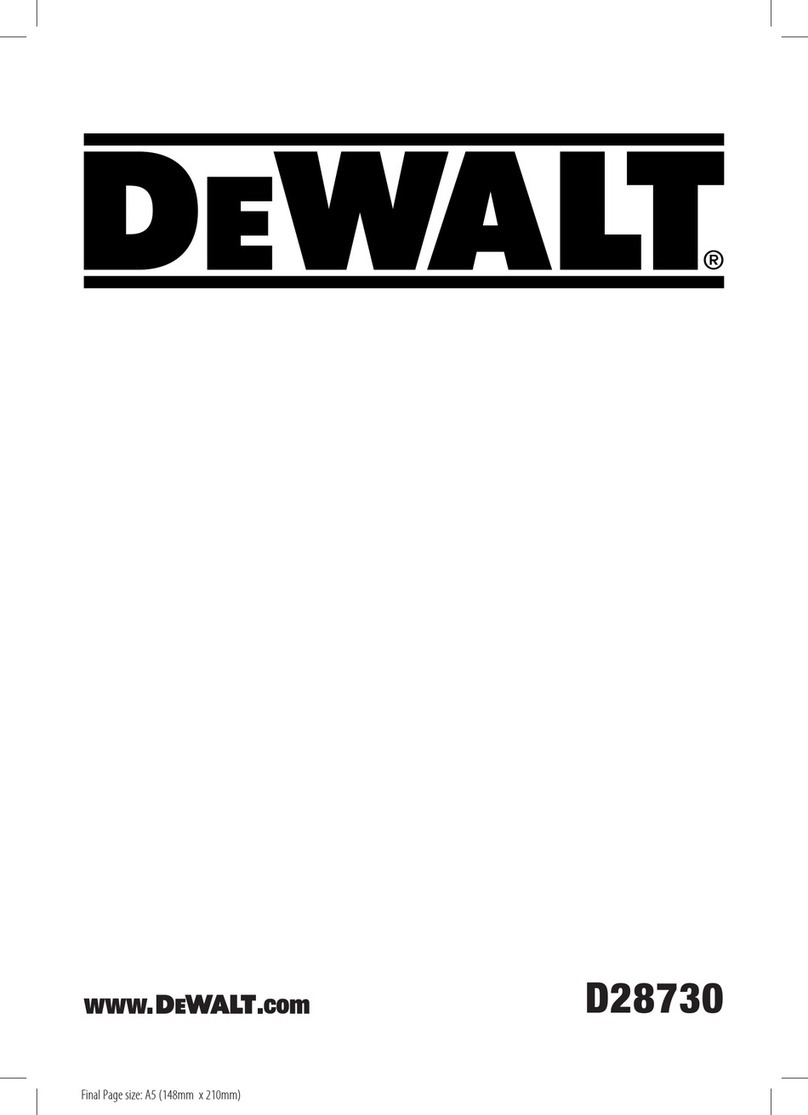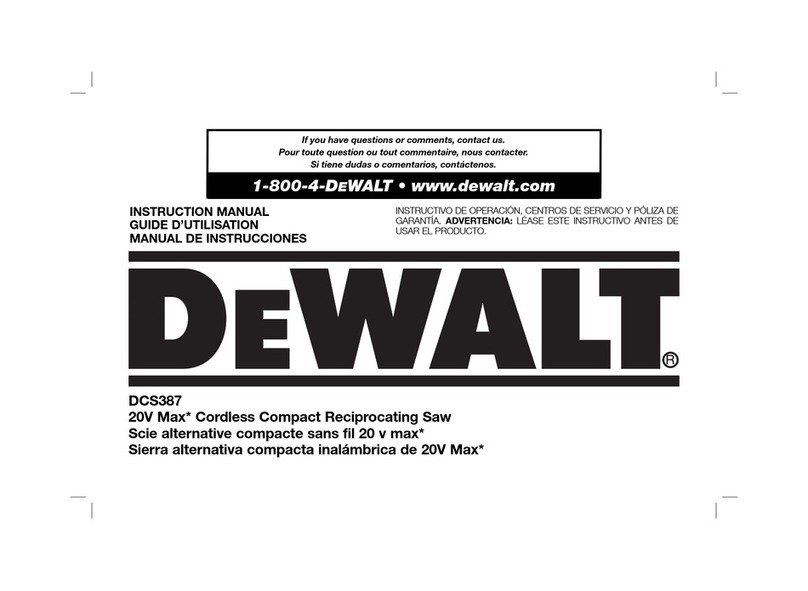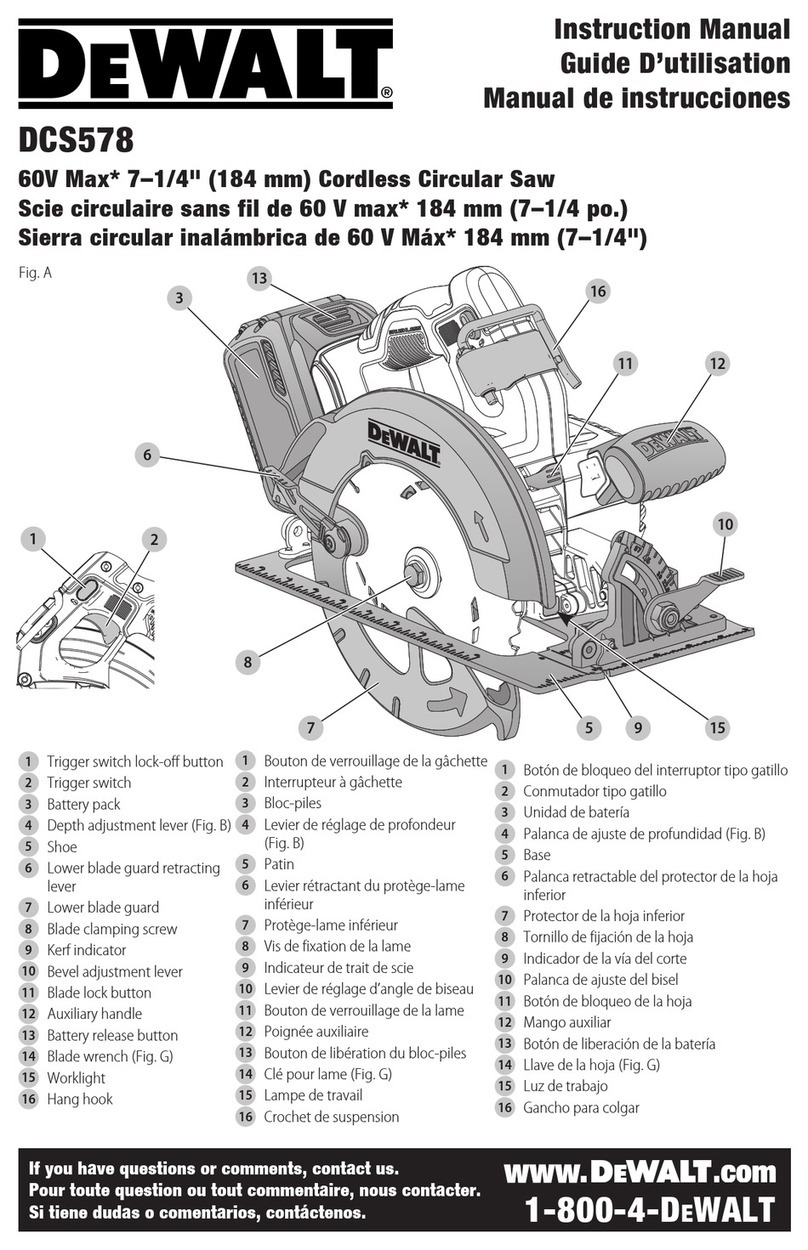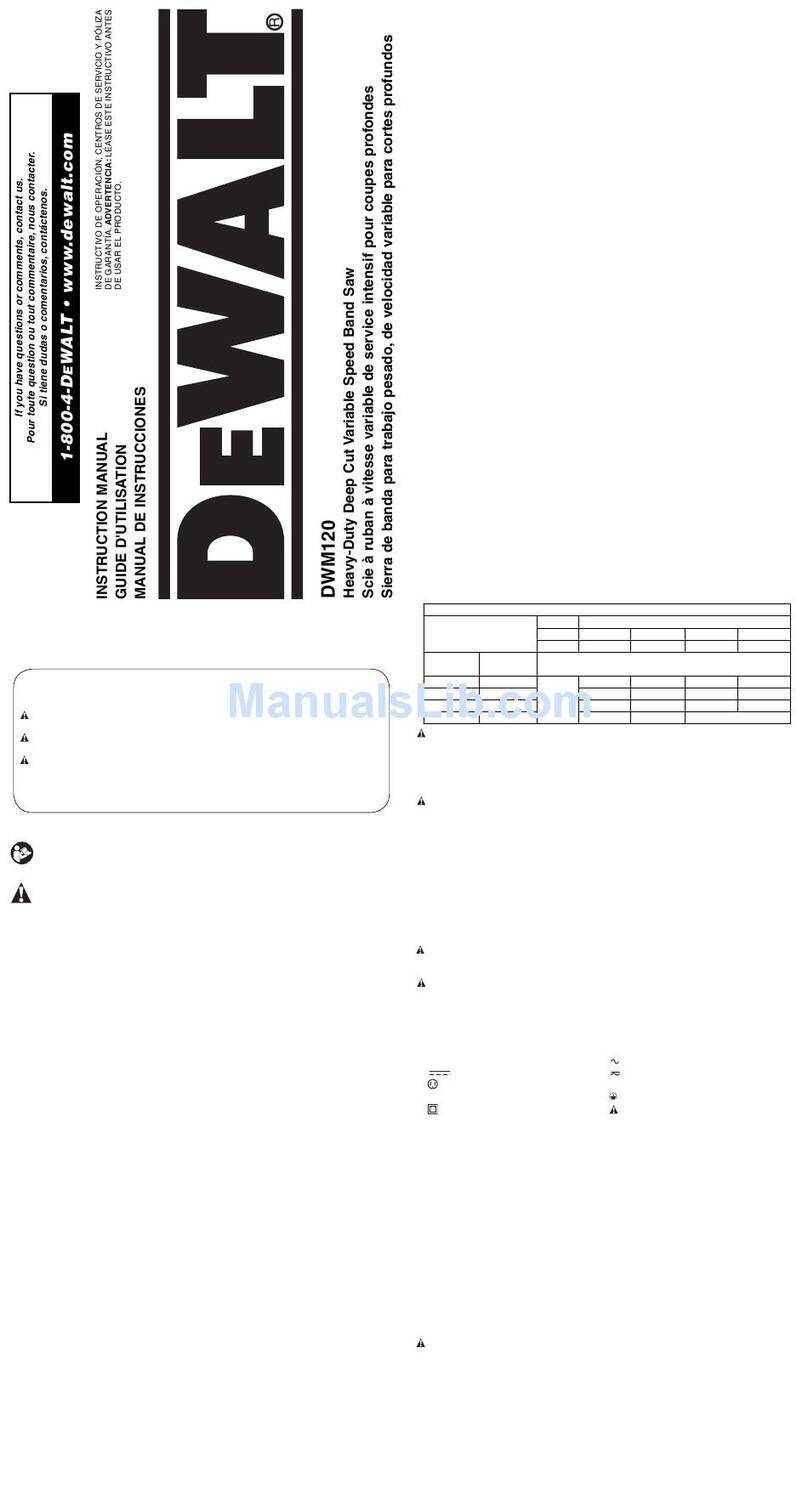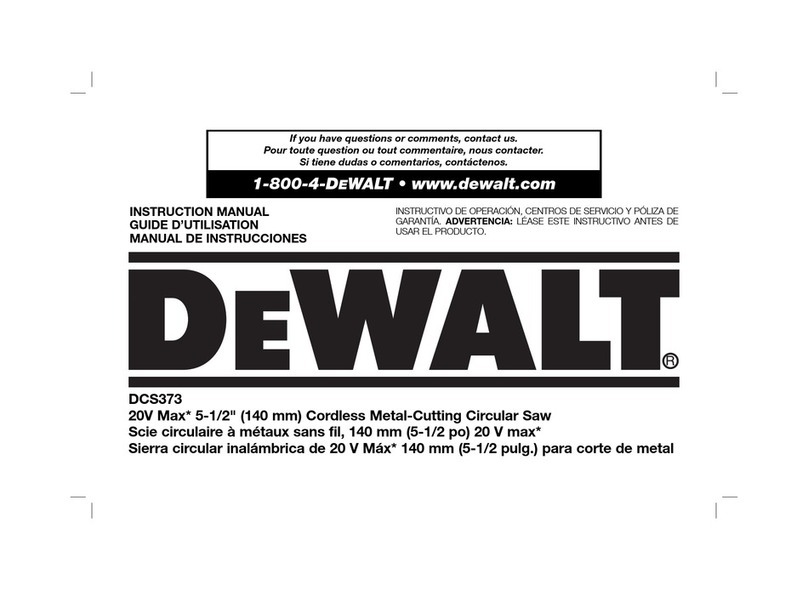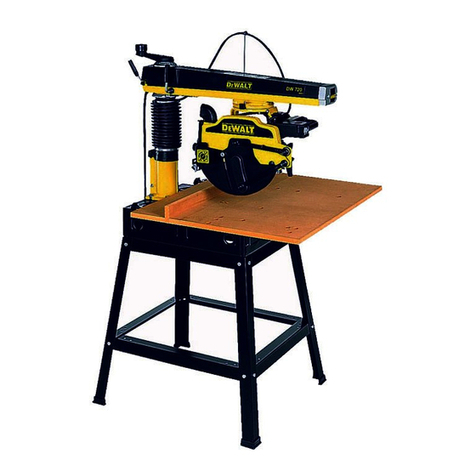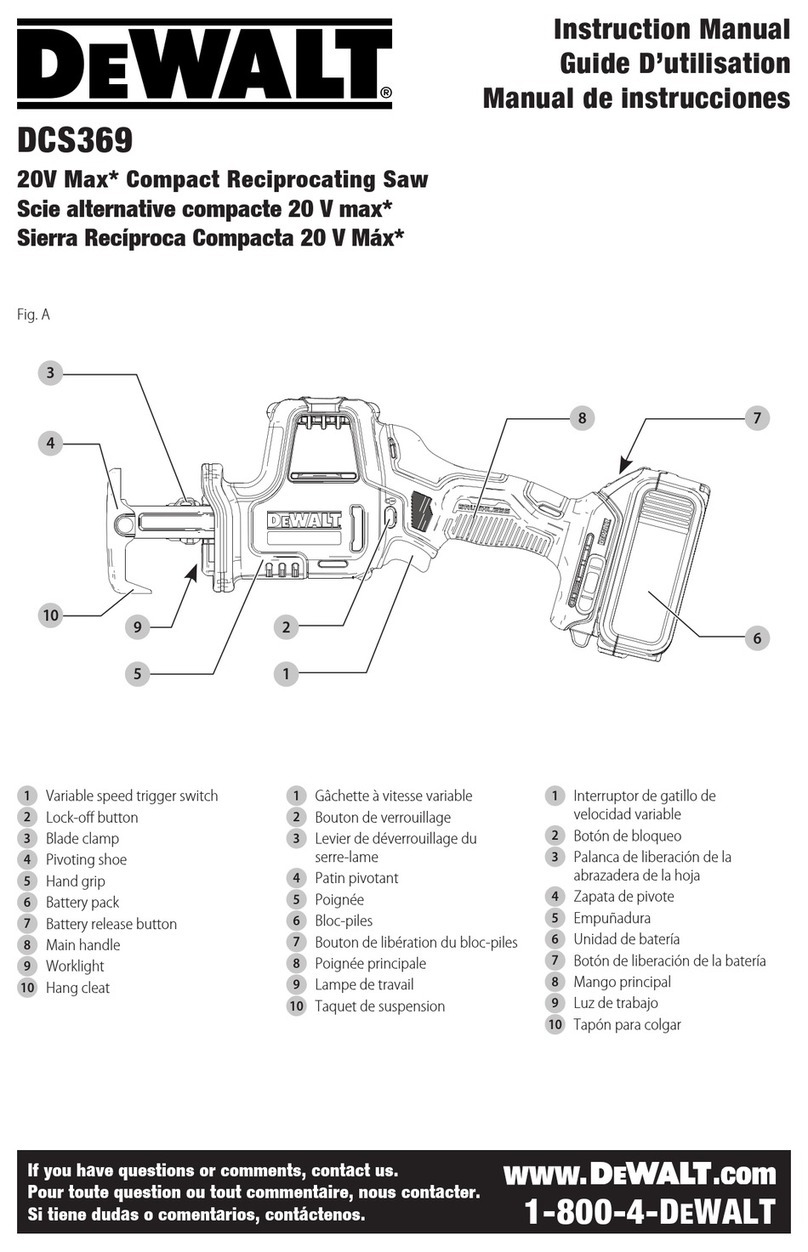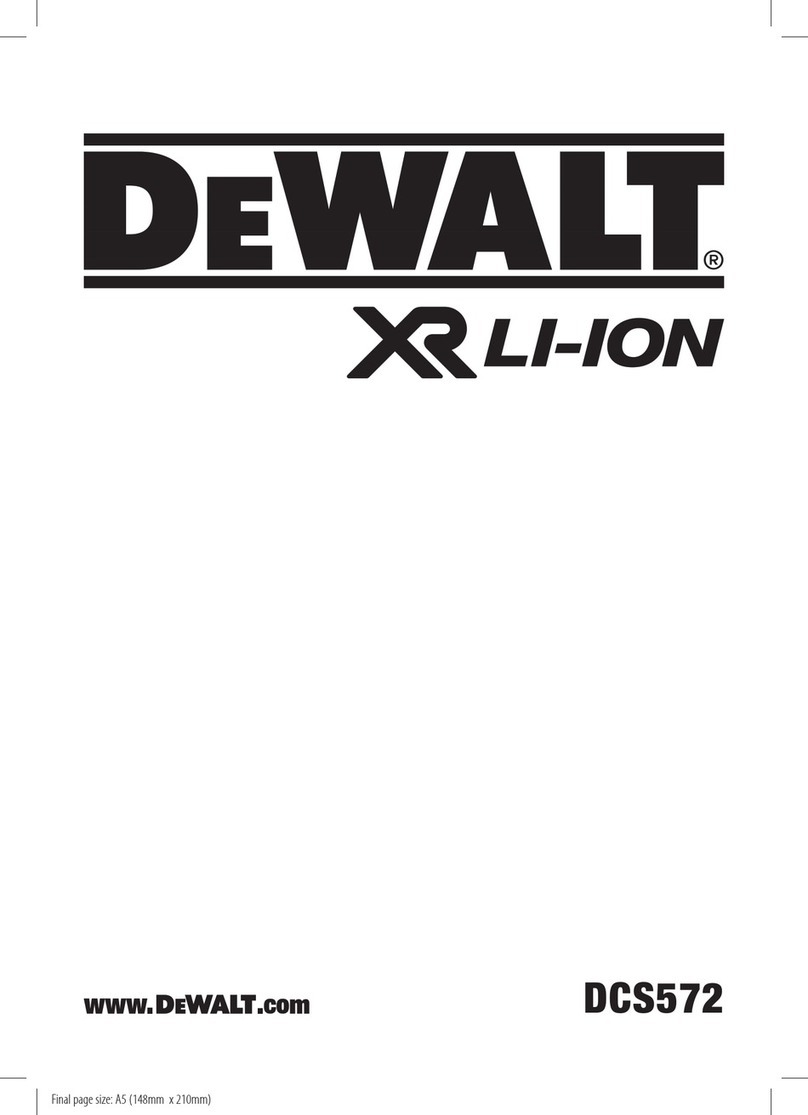
ESPAÑOL
5
Instalación de cuchilla (Fig. B)
1. Empuje la palanca de bloqueo de cuchilla de sierra 3
haciaarriba.
2. Con los dientes viendo hacia el frente, inserte la pata de
la cuchilla de sierra 4 dentro del soporte de la
cuchilla 11 tanto como seaposible.
3. Libere la palanca de bloqueo de cuchilla de lasierra.
4. Revise para asegurar que la cuchilla esté segura antes
decortar.
MONTAJE Y AJUSTES
ADVERTENCIA:Para reducir el riesgo de lesiones
personales, apague la unidad
y desconéctela de
la fuente de energía
antes de realizar cualquier
ajuste o retirar/instalar conexiones o accesorios.
Una activación de arranque accidental puede
causarlesiones.
Motor
Asegúrese de que la fuente de energía concuerde con lo que
se indica en la placa. Un descenso en el voltaje de más del
10% producirá una pérdida de potencia y sobrecalentamiento.
Todas las herramientas son probadas en fábrica; si esta
herramienta no funciona, verifique el suministroeléctrico.
La etiqueta en su herramienta puede incluir los siguientes
símbolos. Los símbolos y sus definiciones son los siguientes:
BPM....................golpes por minuto
V.........................voltios
min..................... minutos
jo DC............. corriente directa
…/min.............. por minuto
RPM....................revoluciones por
minuto
A.........................ampéres
Hz .......................hertz
W........................watts
Wh...................... Watt Horas
no.......................velocidad sin carga
n.........................velocidad nominal
c.....................símbolo de alerta
de seguridad
h.....................use protección
respiratoria
f.....................use protección para
los ojos
i.....................Construcción Clase
II (aislamiento
doble)
g.....................use protección
auditiva
a.....................lea toda la
documentación
n.....................evite mirar
fijamente la luz
lor AC.............corriente alterna
Ah.......................amperios hora
dependiendo de la longitud del cable y del amperaje
nominal de la placa de identificación. Si tiene dudas sobre
cuál calibre usar, use un calibre mayor. Cuanto menor sea el
número del calibre, más resistente será elcable.
Calibre mínimo de conjuntos de cables
Voltios Longitud total del cable en pies
(metros)
120V 25 (7,6) 50 (15,2) 100 (30,5) 150 (45,7)
240V 50 (15,2) 100 (30,5) 200 (61,0) 300 (91,4)
Amperaje
nominal AWG
Más de Más de
0 6 18 16 16 14
610 18 16 14 12
10 12 16 16 14 12
12 16 14 12 No recomendado
ADVERTENCIA: SIEMPRE use gafas de seguridad.
Las gafas de uso diario NO son gafas de seguridad.
También use una careta o máscara de polvo si la
operación de corte produce polvo. SIEMPRE USE
EQUIPO DE SEGURIDAD CERTIFICADO:
• Protección para los ojos ANSI Z87.1 (CAN/CSA Z94.3),
• Protección auditiva ANSI S12.6 (S3.19),
• Protección respiratoria NIOSH/OSHA/MSHA.
ADVERTENCIA: Algún polvo creado por lijado,
aserrado, pulido, perforación eléctricos y otras
actividades de construcción contienen químicos
conocidos por el Estado de California como causantes
de cáncer, defectos de nacimiento u otros daños
reproductivos. Algunos ejemplos de estos químicos son:
• plomo a partir de pinturas a base de plomo,
• sílice cristalino de ladrillos y cemento y otros
productos de mampostería, y
• arsénico y cromo a partir de madera
tratadaquímicamente.
Su riesgo de exposición a estos químicos varía,
dependiendo de la frecuencia con la cual realiza
usted este tipo de trabajo. Para reducir su exposición
a estas sustancias químicas: trabaje en una zona bien
ventilada y llevando equipos de seguridad aprobados,
como mascarillas antipolvo especialmente diseñadas
para filtrar partículasmicroscópicas.
• Use ropa de protección y lave las áreas expuestas con
agua y jabón. Permitir que el polvo entre en su boca, ojos,
o que quede sobre la piel puede promover la absorción de
químicos peligrosos. Dirija las partículas lejos de la cara y
elcuerpo.
• Use la aspiradora de extracción de polvo adecuada
para retirar la mayoría de polvo estático y
transportado por aire. La falla en retirar el polvo estático
y transportado por aire podría contaminar el ambiente de
trabajo y presentar un riesgo de salud mayor al operador y
personas en lascercanías.
• Use abrazaderas u otras maneras prácticas para
asegurar y soportar la pieza de trabajo a una
plataforma estable. Sostener el trabajo a mano o contra
su cuerpo es inestable y puede guiar a la pérdida de control
ylesiones.
• Las ventilas de aire a menudo cubren las partes
móviles y se deben evitar. La ropa suelta, joyería,
o cabello largo podrían quedar atrapados en las
partesmóviles.
• Los hilos del alargador deben ser de un calibre
apropiado (AWG o American Wire Gauge) para
su seguridad. Mientras menor sea el calibre del hilo,
mayor la capacidad del cable. Es decir, un hilo calibre
16 tiene mayor capacidad que uno de 18. Un cable de
un calibre insuficiente causará una caída en la tensión
de la línea dando por resultado una pérdida de energía
y sobrecalentamiento. Cuando se utilice más de un
alargador para completar el largo total, asegúrese que
los hilos de cada alargador tengan el calibre mínimo.
La tabla siguiente muestra el tamaño correcto a utilizar,

